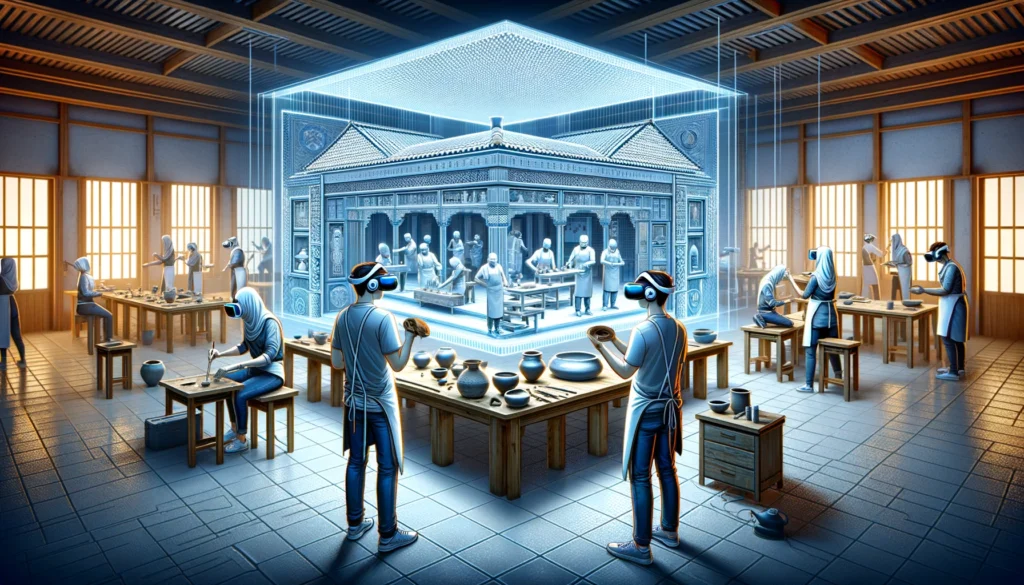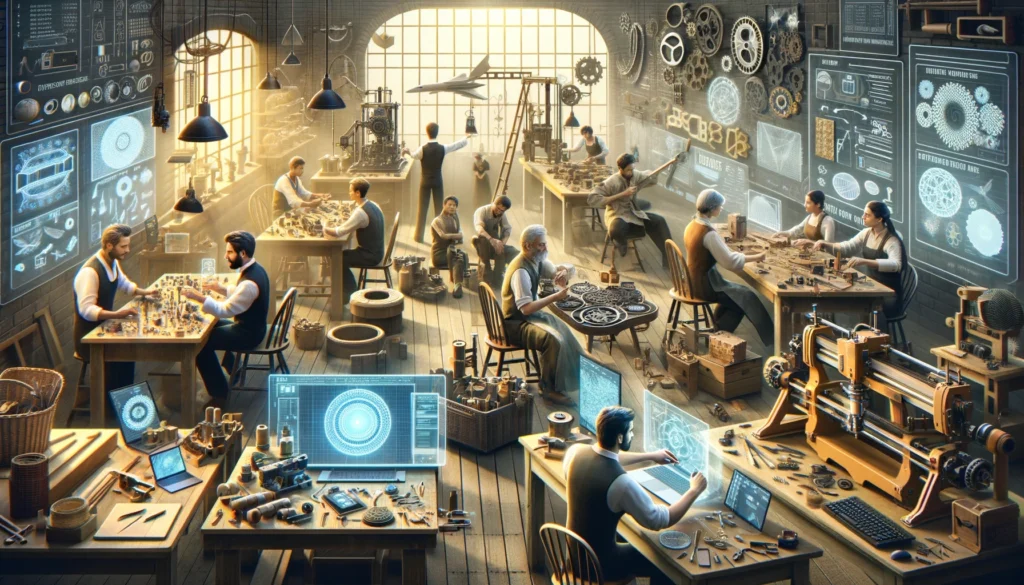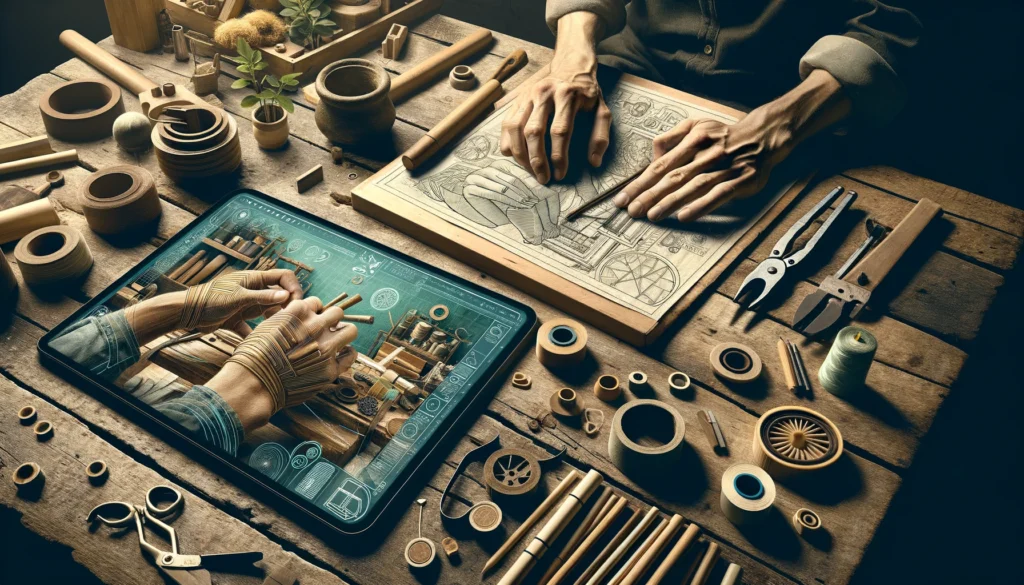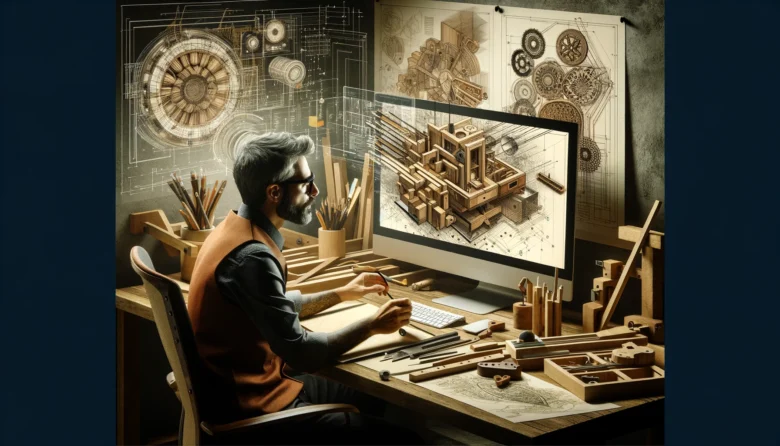The fusion of traditional crafts with modern technology is not just an evolution; it’s a revolution in the making. This synergy is breathing new life into age-old practices, blending the rich heritage of artisanal craftsmanship with the boundless possibilities of the digital age. As we delve into this fascinating confluence, we uncover how technology is not merely aiding but transforming the realm of traditional crafts, ensuring their relevance and appeal in today’s fast-paced world.
Key Technologies Transforming Traditional Crafts
3D Printing: Shaping the Future
3D printing is at the forefront of this transformation, enabling artisans to create complex designs that were once considered too intricate or time-consuming. This technology allows for rapid prototyping, customizations, and the production of designs that push the boundaries of traditional methodologies.

Laser Cutting and Engraving: Precision at Play
Laser technology provides artisans the ability to cut and engrave materials with unparalleled precision. Whether it’s creating delicate patterns on wood, leather, or fabric, laser cutting and engraving enhance the aesthetic and value of traditional crafts, offering new ways to blend artistry with efficiency.
Digital Fabrication: The New Artisan’s Tool
Digital fabrication, including computer-aided design (CAD) and computer numerical control (CNC) milling, marries the old with the new. Artisans can now carve, cut, and shape materials with precision, combining traditional crafting techniques with digital tools to create products that are both innovative and rooted in tradition.
The Impact on Traditional Crafts
The integration of modern technology into traditional crafts marks a turning point in how we preserve, innovate, and appreciate these age-old practices. The fusion of the past and present through technology not only breathes new life into traditional crafts but also redefines their place in the contemporary world. Let’s delve into how this integration impacts traditional crafts across various dimensions:

Preserving Cultural Heritage
Modern technologies, such as 3D printing and laser cutting, serve as powerful tools for preserving cultural heritage. They allow artisans to replicate ancient artifacts and techniques with precision, ensuring that even the most intricate details of traditional crafts are not lost to time. This preservation is crucial for maintaining a tangible connection to our past, providing a window into the lives, beliefs, and artistic expressions of our ancestors.
Expanding Creative Boundaries
The use of cutting-edge technology in traditional crafts has led to an unprecedented expansion of creative boundaries. Artisans are now able to explore complex designs and forms that were once deemed impossible or too labor-intensive to achieve by hand. Technologies like digital fabrication open up new avenues for creativity, enabling craftspeople to push the limits of their traditional mediums and explore new materials and techniques.
Enhancing Accessibility and Learning
Technology has made traditional crafts more accessible than ever before. Through online platforms and digital archives, anyone with internet access can learn about the diversity of crafts practiced around the world. Furthermore, virtual reality (VR) and augmented reality (AR) technologies offer immersive learning experiences, allowing individuals to virtually step into an artisan’s workshop and witness the crafting process first-hand. This accessibility not only educates but also inspires new generations to carry on the legacy of traditional crafts.
Supporting Sustainability
The integration of technology in traditional crafts also plays a pivotal role in promoting sustainability. By utilizing materials and methods that reduce waste and environmental impact, artisans can adhere to the principles of sustainable development while practicing their craft. Technologies such as digital pattern-making and material optimization software help minimize excess waste, aligning the practice of traditional crafts with the values of eco-conscious consumers and societies.

Conclusion
The integration of technology into traditional crafts is not just about preserving these age-old practices; it’s about reimagining them for the modern age. This journey into the heart of innovation showcases the incredible potential for growth, creativity, and sustainability within the world of traditional artisanship. As we embrace these technological tools, we pave the way for a future where tradition and innovation walk hand in hand, crafting a legacy that is both timeless and timely.
Author’s Note
As we explore the myriad ways in which technology enhances and transforms traditional crafts, it’s clear that we’re on the cusp of a new era in artisanship. This blog series aims to illuminate the paths forged by innovative artisans who embrace the digital age, ensuring that their crafts not only survive but thrive. Join us as we continue to uncover the evolving landscape of traditional crafts, where technology opens up new horizons of creativity and opportunity.
G.C., Ecosociosphere contributor.
References and Further Reading
- “The Definitive Guide To 3D Printing: The Past, Present, And Future” – A comprehensive look at how 3D printing is revolutionizing traditional crafts.
- “Laser Cutting and Art: An artistic revolution” – Insights into how laser technology is being used to enhance artisanal work.
- “The Alchemy of Digital Fabrication” – An exploration of digital fabrication techniques and their impact on traditional crafts.
By marrying the rich heritage of traditional crafts with the innovative possibilities of modern technology, artisans are crafting a future where their work remains as relevant and cherished as ever.





Comments
Thank you for your sharing. I am worried that I lack creative ideas. It is your article that makes me full of hope. Thank you. But, I have a question, can you help me?
Your article helped me a lot, is there any more related content? Thanks!
Your point of view caught my eye and was very interesting. Thanks. I have a question for you.
Your article helped me a lot, is there any more related content? Thanks!
Your article helped me a lot, is there any more related content? Thanks!
Your article helped me a lot, is there any more related content? Thanks!
Thank you for your sharing. I am worried that I lack creative ideas. It is your article that makes me full of hope. Thank you. But, I have a question, can you help me?